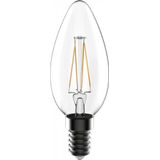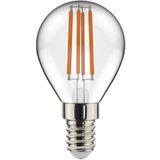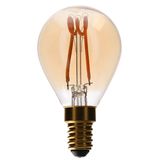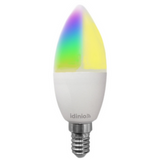Shada E14 LED Lamps Dimmable






shada e14 dimmable led lamps for compact fixtures
Small-neck screw lamps that track cleanly on modern dimmers and fit tight shades without binding. Form factors cover candle (C35/B35) and golfball (P45) with clear filaments for visible pendants and opal domes for soft ambient layers. Installers get consistent cap geometry, generous dome clearance for crystal collars, and cartons labeled with true lumen classes so one-for-one swaps from legacy wattages are straightforward.
Product range and form factors for E14 circuits
Candle pieces handle chandeliers, sconces, mirror lines, and corridor strings; golfballs suit bedside and compact shades. Output classes typically sit at ~250–470 lm for multi-arm sparkle, 600–806 lm where a single point must hit task levels. Beams are wide (≈300–320°) to avoid streaks on bowls and diffusers. Options include high-CRI variants for hospitality, low-flicker electronics for camera-heavy venues, and enclosed-rated versions for sealed globes. Appliance skus exist for chillers; for ovens, specify only the dedicated high-temperature types from the submittal.
shada dimmable candle lamps shapes and optics
Clear glass preserves the sharp highlights expected in crystal and cut-glass pendants; spiral or linear filament arrangements keep the decorative signature without color fringing. Opal domes flatten shadows in hotel corridors and near mirrors. In multi-arm fixtures, matching filament geometry across the room prevents mixed sparkle; where glare is a concern, choose soft-frost optics and set the dimmer minimum during commissioning.
shada e14 dimmable lighting electrical and photometric parameters
Electrical: 220–240 V AC, 50/60 Hz; typical power 2.5–7 W by lumen class. Power factor ≥0.5 on low-power types, up to ≥0.9 on premium drivers. THD usually ≤20 %. Surge robustness 1–2 kV helps on long apartment spurs. Thermal envelope −20…+40 °C; check tc when lamps sit in sealed cups.
Photometrics: CRI 80 baseline with CRI 90 options; common CCTs 2700 K, 3000 K, 4000 K. Wide emission supports uniform shades and cove work. Flicker is held low via constant-current regulation—specify PstLM/SVM where cameras or machine-vision are present.
Lifetime: typically L70/L80 at 15–30k h for decorative filaments and up to 50k h on opal mid-power packages, with LM-80/TM-21 supporting data.
Compliance: aligns with IEC/EN 62560 and EN 62612; control gear references IEC/EN 61347-1/-2-13; EMC to EN 55015 and EN 61000 series; materials RoHS.
Dimming behavior and control notes
Trailing-edge (MOSFET) plates deliver the smoothest low-level curve and quieter operation near audio-visual spaces. Leading-edge remains viable on legacy stock—confirm the approved load window and set a minimum level to prevent shimmer. Avoid mixing lamp revisions on one channel; curves drift. For maintained circuits driven by inverters, select lamps validated for DC or square-wave outputs so egress levels are met.
shada small base dimmable lights applications and compatibility
Hospitality suites and dining clusters benefit from 2700 K with CRI 90 to keep timber and food tones honest. Public lobbies and galleries often standardize on 3000 K, while 4000 K suits task-leaning back-of-house. In multi-arm chandeliers, more lamps at lower power run cooler than a few high-lumen pieces in sealed cups. Vintage fittings vary—verify cup diameter and globe width; some collars bite into over-wide domes. Where occupancy sensors share the loop, choose zero-crossing relays to reduce driver stress.
Integration with Shada installation hardware and controls
Pair lamps with Shada E14 holders, ceiling roses, and compression glands to keep strain relief and IP performance consistent. Wall plates from the brand’s switch range provide stable trailing-edge control; note the minimum stable set-point in handover docs. For corridor strings, quick connectors and labeled ferrules from the accessories line cut ladder time and keep CCT/CRI visible after service. If future scenes are planned, keep conduit space for gateway nodes now and limit app-driven control to rooms that truly need it.
Selection criteria for B2B clients
Start with maintained lux at the working plane and shade losses; pick 250–350 lm for multi-arm ambiance, 470–600 lm for single sconces, and 806 lm where one lamp must carry the task. Lock CCT per zone and specify CRI 90 in front-of-house. Confirm dimmer type and channel loading; document the approved controller list in the close-out pack. Respect tc in sealed shades—either step down one lumen class or select enclosed-rated models. For uniform looks, keep a single filament geometry per zone so photos and post-handover marketing don’t show mixed sparkle.